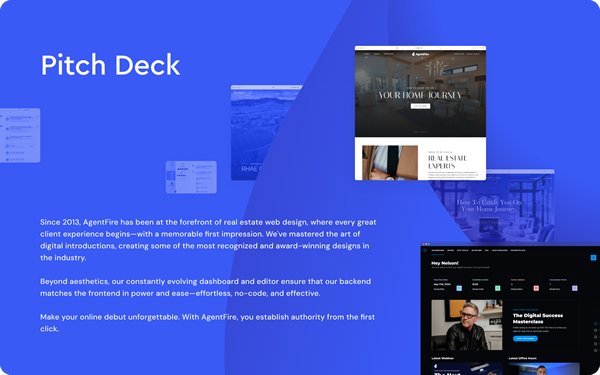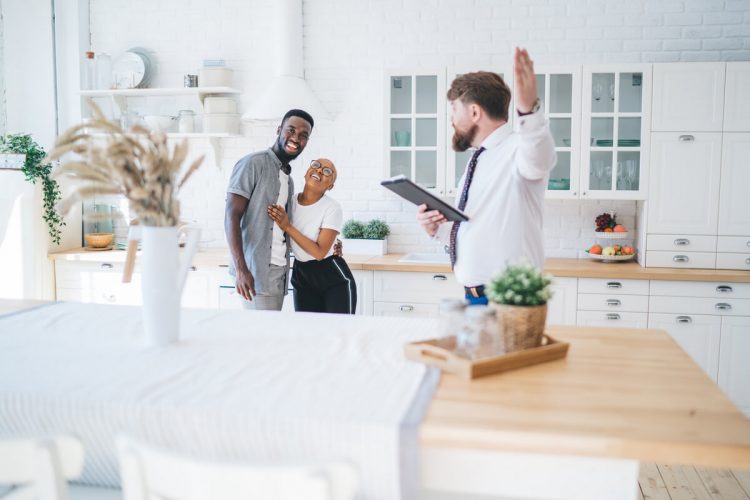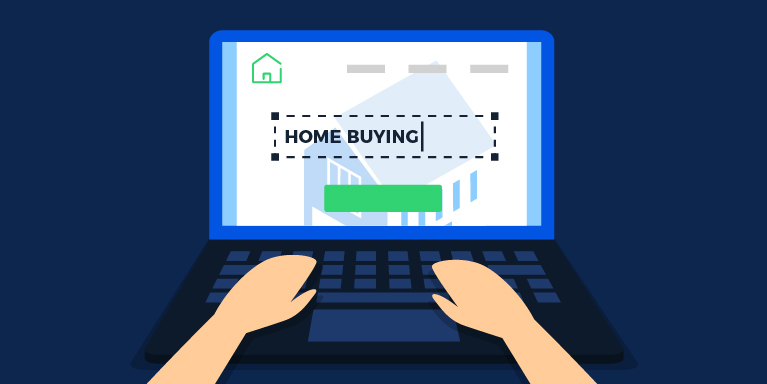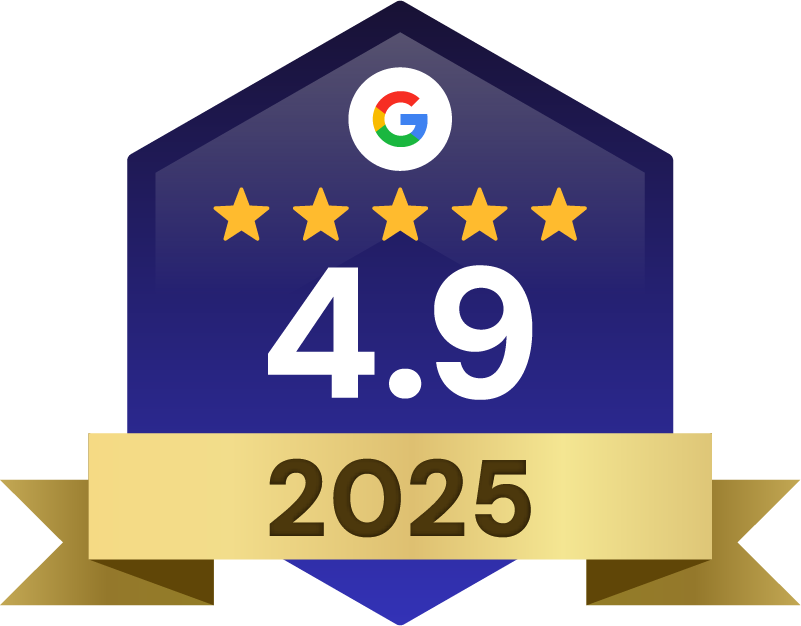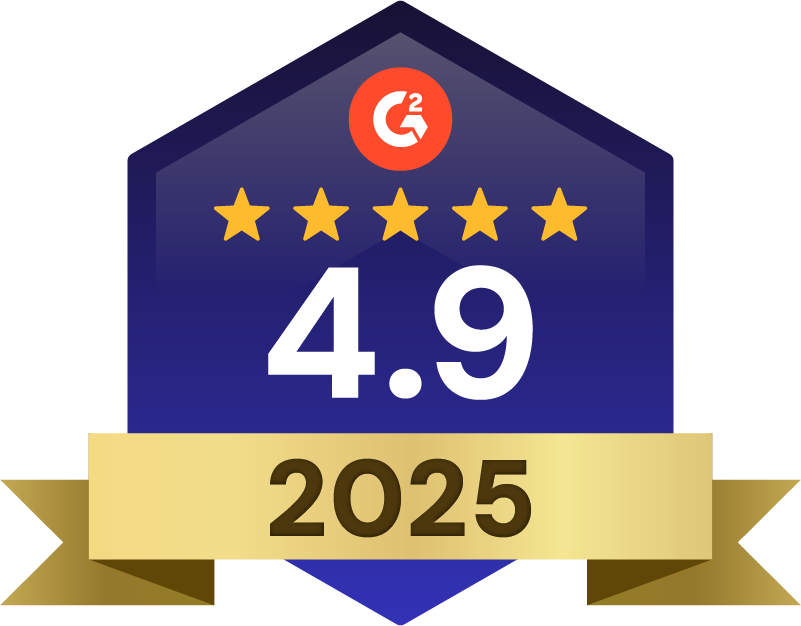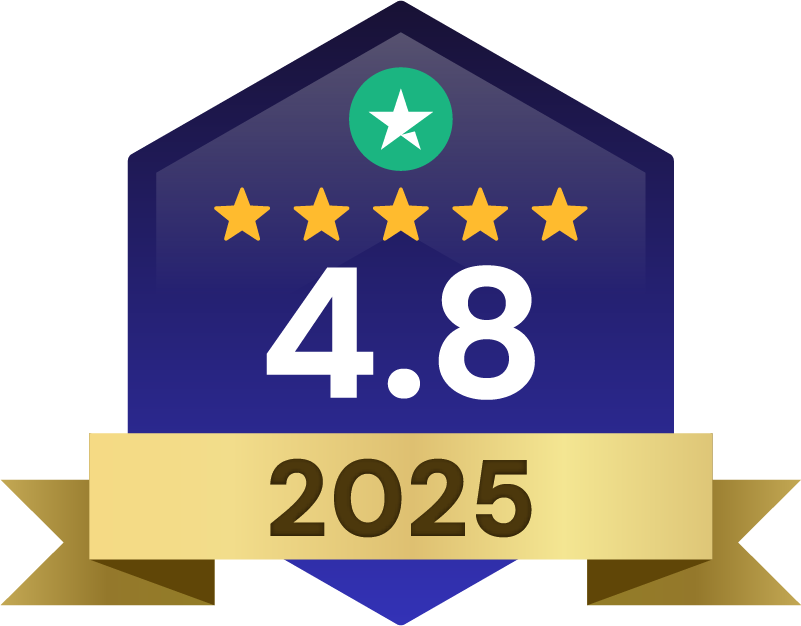31 must-have open house ideas for realtors: 1. Schedule Strategically · 2. Use Online Listings and Social Media · 3. Secure the Neighbors’ Goodwill
Branding & Design Lead Generation
Hosting an open house remains one of the most reliable ways for realtors to generate fresh real estate leads, strengthen their real estate brand, and, of course, help sell properties faster. Despite the rise of virtual tools—like online listing portals, livestream tours, and virtual staging—there is still nothing quite like walking through a property in person that sparks a buyer’s imagination.
In this guide, we’ll walk you through 31 practical open house ideas for realtors covering every phase of your event: from marketing to execution, from neighbor outreach to follow-up. We’ll cover how to attract maximum attendees, optimize digital sign-ins, delight guests with compelling property tours, and ensure your leads don’t vanish once the day is done. By the time you’re finished reading, you’ll have everything you need to become an open house superstar.
Why Open Houses Still Matter
Even though some question whether open houses are “old school,” many realtors (and prospective buyers) continue to see the value. An open house offers:
- Tactile Experience: Buyers can engage all five senses, from feeling the texture of kitchen countertops to hearing the subtle neighborhood sounds.
- Casual, Low-Pressure Environment: People can wander through the home freely, which reduces the intensity of private showings. This sometimes draws in “on-the-fence” or first-time buyers.
- Brand-Building for Agents: You, the realtor, shine by showcasing expertise, sharing local knowledge, and assisting with everything from mortgage questions to design ideas.
- Lead Generation: Properly capturing information about attendees allows you to follow up strategically, converting casual browsers into potential buyers, sellers, or referral sources.
Let’s now dive into the key steps and structured approach you can use to succeed with open houses—whether you’re brand-new to the industry or have closed hundreds of deals.
Plan and Prepare: Essential Open House Marketing Ideas
Before the big day, you’ll want your open house strategy locked in. A common mistake is throwing everything together at the last minute, resulting in low attendance. Instead, treat your open house as a distinct marketing campaign. Pay special attention to the following steps.
1. Schedule Strategically
It might seem obvious, but choosing the date and time can make or break your turnout. When you’re operating in a family-friendly neighborhood, for instance, avoid major sporting events that could captivate local residents. Also consider local traditions or community activities. For high-traffic regions, Sunday afternoons often remain the sweet spot, but you can experiment with “twilight open houses” midweek— especially if the property has amazing sunset views or city lights.
2. Use Online Listings and Social Media
A well-crafted listing on the MLS is essential, but consider expanding beyond that. Advertise via Facebook Events, Instagram story slides, local online communities, and real estate marketplace apps. Announce “just listed” or “coming soon” teasers to generate anticipation, highlighting one or two unique features of the home. If the property has a newly remodeled kitchen or gorgeous landscaping, share a short video snippet as a teaser.
3. Secure the Neighbors’ Goodwill
Don’t underestimate the power of neighbor excitement. They may know friends or relatives eager to move into the area. Hand-deliver invitations or use door hangers with the property’s address and time. Keep it friendly. Ask them to drop by for a private “neighbors-only” sneak peek. These tactics help build goodwill, boost attendance, and show how you value local relationships.

4. Partner with Local Businesses
Community partnerships are a win-win situation. By collaborating with a nearby bakery or coffee shop for refreshments, for example, you give them a chance to market to new prospects while you get an enticing snack station for your open house. Pro tip: highlight the business on your social media feed, tag them, and encourage them to share with their followers, too. This cross-promotion can expand your audience significantly.
5. Optimize Your Outdoor Signage
A single arrow sign simply labeled “Open House” might not cut it, especially if you’re in a neighborhood with multiple open houses on the same day. Make sure your signs clearly feature your name, contact info, and company branding. Attaching balloons or adding bright visuals can grab more attention from drivers. Place signs strategically near busy intersections, but follow local regulations to avoid fines or sign removals.
Capture More “Open Leads” with Smart Sign-Ins
Once the open house is under way, the focal point shifts to lead capture. You don’t just want random visitors streaming in. Rather, you want viable, consistent data you can use to convert them into future clients or referrals.
6. Use QR Codes for Contactless Registration
Digital sign-ins are a game-changer. By displaying a QR code on a simple tabletop stand, visitors can scan it using their phone, filling out their name, phone number, and email. This prevents handwritten scribbles you can’t decipher and drastically cuts down on data entry errors. Systems like Curb Hero, Open Home Pro, or even a custom Google Form can make your post-event follow-up much simpler.
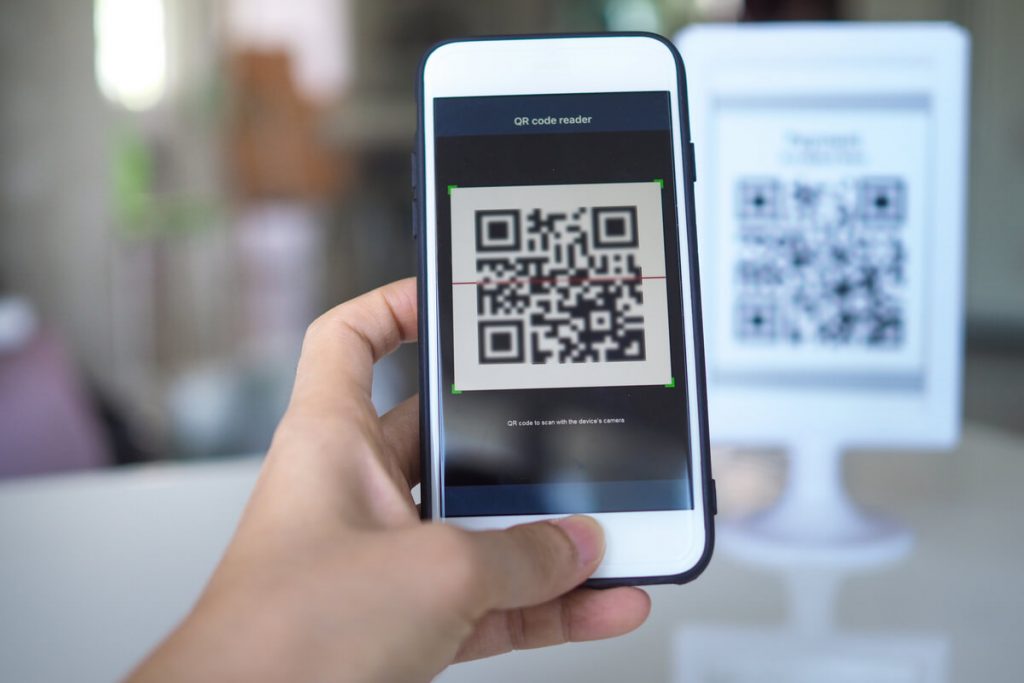
7. Offer a Raffle Incentive
You may attract more sign-ups by raffling off a $25 gift card to a local café or a small home décor store. People are far more motivated to submit accurate info if there’s a tangible benefit for them. Make sure you display announcements about the raffle throughout the property so guests don’t miss the chance to win.
8. Share Local Neighborhood Info
A small info station can set you up for success. Print out school district ratings, average commuting times, local restaurant menus, and more. Mention any unique upcoming neighborhood events or notable local hotspots. Many buyers attend open houses to get a feel for the broader area, not just the property. By stepping into the role of “local expert,” you win trust.
9. Use an Automated Lead-Capture App
Some advanced technology—like Spacio or Cloze—automates sign-ins and syncs leads directly into your CRM. Not only do you get an organized lead list, but you can also set up automated follow-up workflows. For example, if a visitor checks a box indicating they’re a first-time buyer, your system can automatically send them a custom “Buyer Education Series” email sequence over the next few weeks.
Showcase the Home and Build Your Brand
Here’s your opportunity to create a lasting impression. It’s not just about the property; it’s also about you as a realtor. A memorable open house can position you as the go-to agent in the neighborhood for both potential buyers and sellers.
10. Stage a Memorable First Impression
First impressions shape how buyers perceive the entire home. Ensure walkways are cleared, exterior lights are on (if it’s evening), and the front door is immaculate. Inside, light background music—classical, jazz, or acoustic—can help buyers feel relaxed. Keep the temperature comfortable. One of the simplest mistakes is letting a house stay too cold or too hot, making guests eager to leave.
11. Highlight Unique Property Features
Buyers often skim property descriptions online, so use physical or digital tent cards to point out details they might overlook—like a newly installed water heater with energy-saving features, or a hidden built-in spice rack in the gourmet kitchen. Demonstrating these unique touches can add emotional appeal and practicality to the property, which helps your open house stand out.
12. Try a Themed Open House
A subtle theme can leave a lasting impression. For instance, if you’re close to the ocean, a seaside vibe with gentle coastal colors, seashell décor, or small anchor motifs might resonate. If you’re in an urban space with a rooftop deck, hosting a “Sunset Happy Hour” open house can lure in after-work crowds. Tailor the theme to what best complements the property’s selling points and local culture.
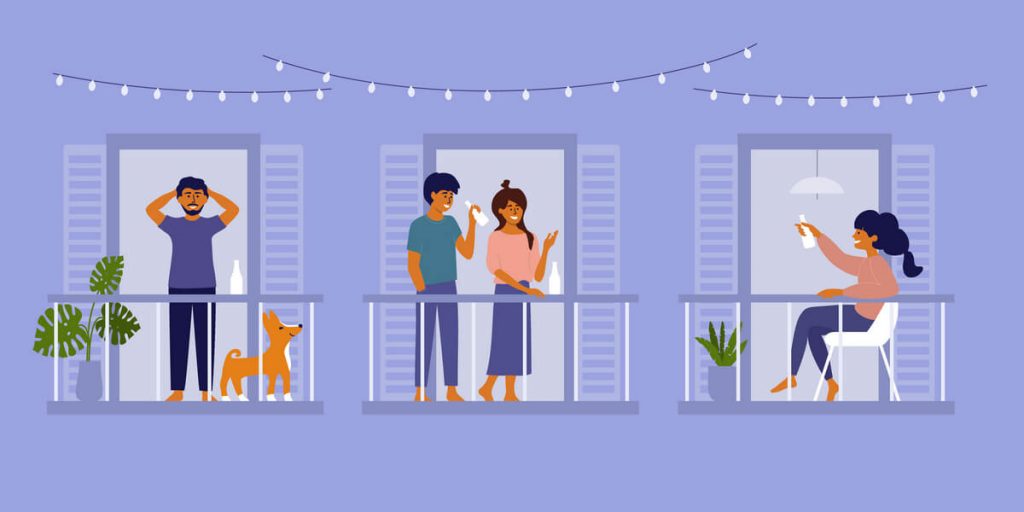
13. Use Virtual Staging for Empty Rooms
Empty spaces sometimes underwhelm buyers who struggle to visualize layout possibilities. By printing out large photographs or walk-around posters of the room in a virtually staged look, you help spark imagination. Guests can suddenly see how a king-size bed or sectional sofa would fit. Discuss color palettes or furniture arrangement ideas with them, reinforcing your role as an all-around resource.
14. Provide Branded Takeaways
People love freebies, so why not attach your brand name to them? Consider small, branded items:
- Water Bottles: Perfect for a warm day.
- Magnets: Feature your contact info and perhaps a monthly tips checklist.
- Mini Notepads: Great for buyers who like to jot down pros and cons of the house.
If you personalize these items thoughtfully, visitors are more likely to keep them around, reminding them of you long after the open house.
15. Add Some Refreshment Flair
If your open house is midday, a coffee bar with pastries is always a hit. For higher-end homes, you might serve artisanal cheese boards or small baked goods from a neighborhood shop. Refreshments encourage guests to linger, giving you more chances to chat and understand their real estate goals.
16. Keep Yourself Safe and Aware
A bustling open house can pose safety considerations. Invite a junior agent or friend to assist. If the home is large or has multiple floors, coordinate so that no areas go unsupervised. Some realtors even adopt an app that verifies identification if a guest wants a private viewing.
17. Engage in Genuine Conversation
Rather than just reciting property specs, ask open-ended questions: “What kind of features feel most important in your new home?” or “What are your favorite spots to gather with family?” By leaning in and listening carefully, you can determine how serious or ready they are and guide them accordingly.
18. Encourage Live Social Sharing
Spruce up a small corner or background area so that it’s photo-friendly. A custom sign that says “Just Listed!” or “Dream Home” can prompt guests to capture quick snaps. If they tag you (or the property), that’s free social marketing reaching their circle of friends who might also be in the market.
Make It Interactive: Open House Marketing Ideas That Spark Fun
Adding a little fun or interactive element can help your open house stand out. Buyers go to multiple open houses in the same weekend. A unique “wow factor” can help them remember yours above all others.
19. Livestream for Virtual Visitors
Simulcast a portion of the tour on Facebook Live or Instagram Live. Greet virtual attendees, guide them through key rooms, and invite questions in real time. This method reaches potential buyers who are traveling or unable to make it in person. Just ensure your phone and Wi-Fi connection are stable to avoid buffering mishaps.

20. Neighborhood Scavenger Hunt
If you’re working in a close-knit area with multiple listings, coordinate a scavenger hunt in partnership with other agents. Each open house can offer a small token or collectible card. Visitors who gather all the tokens can enter a final raffle. It’s surprising how many more attendees you can bring in with a fun, gamified vibe.
21. Ask for Feedback
Create a quick, non-intimidating feedback box so visitors can anonymously share what they loved, disliked, or found confusing. This helps you refine your open house approach for future showings and provides genuine feedback for the sellers. It also signals to visitors that their opinions are valued, making them feel more engaged.
Effective Open House Email Follow Up and Next Steps
You’ve done tons of work to make the open house run smoothly. Now it’s time to deliver on the second phase: making sure none of those sign-ins fall through the cracks. Following up promptly using an open house follow up email can transform casual prospects into your next clients.
22. Send a “Thank You” Within 24 Hours
People’s memories fade quickly. With a short, courteous email, you can stand out in their inbox, reminding them how professional and responsive you are. Thank them by name, and include a property recap they can review. Also, give them a quick link to photos or a 3D tour if available. The personal touch of a “Hi, John and Stacy—Thanks for coming yesterday!” can resonate strongly.
23. Provide Neighborhood Comparisons
When responding to “just looking” visitors, be proactive. Mention a few homes with comparable features or in the same area. This signals you’re ready to help them explore alternatives. That kind of diligent follow-up is a hallmark of top-performing realtors who keep a pipeline well-supplied, even if the visitors pass on your specific listing.
24. Encourage Replies with a Specific Question
Generic emails like “Thanks for coming, let me know if you have questions” are less likely to get a response. Instead, spark conversation with short, specific queries:
- “Are you seeking a big yard or more of a condo lifestyle?”
- “What’s your timeline for moving?”
- “Would you prefer a one-story or two-story layout?”
This approach helps you gauge motivation and gather clues on how to serve them best.
25. Use Targeted Drip Campaigns
Some leads won’t immediately respond, but that doesn’t mean they’re lost. A well-staged series of follow-up emails—sent over days or weeks—keeps the lines of communication open. For example:
- First Email: Thank them for visiting.
- Second Email (3-4 days later): Local market trends or interest rate updates.
- Third Email: List of upcoming open houses or local events.
This consistent approach is key to building trust. You’ll stay top-of-mind if they decide to re-engage in three weeks—or even three months.
26. Offer a Quick Phone Call
Plenty of leads still appreciate a short phone conversation over the impersonal nature of email. A quick text message or email saying “Would love to hop on a 5-minute call to answer your real estate questions—what’s the best day/time?” can open a direct dialogue. Voice connections often expedite the process of understanding their property goals.
27. Track and Segment Your Leads
Organize your leads in your CRM by criteria. Tag them as “Hot,” “Warm,” or “Long-Term” based on your interactions. Maintain notes about each visitor’s preferences and timeline. This segmentation helps you send relevant content—like area insights to relocating families, or a mortgage financing article to first-time buyers.
28. Touch Base Even if They Pass
Common courtesy can exceed expectations. If certain buyers or visitors say, “We decided on a different area,” a short follow-up text or call to say, “Best of luck—if you ever need a second opinion, let me know!” can leave a lasting positive impression. Real estate is about relationships, and you never know who they’ll refer your way.
Overcome Common Open House Hurdles
Every open house has at least one or two surprises. Being prepared to handle typical obstacles can keep you calm.
29. Handling Low Foot Traffic
You might sometimes host an open house on a quiet weekend. Treat each attendee with extra care. Give them the same experience you’d offer a bigger crowd, plus add personal touches. Low foot traffic can yield deeper connections with the few who do show up, which might translate into a strong lead.
30. Turning “Just Looking” Into “Open Leads”
Many visitors are hesitant to admit they’re serious buyers (or sellers). Try questions like, “What would your perfect house look like?” or “Any must-haves for your next place?” This can open the door to more revealing conversation. They might actually be stealth sellers wanting to see how you conduct your open house. Make sure they see the expertise and personal attention you provide.
31. Protecting the Property
While it’s crucial to create a laid-back, welcoming environment, never compromise security. Hide or lock away valuables, gather personal items, and (if necessary) keep the basement and attic lightly supervised. Some realtors prefer using sign-in requirements for every visitor to maintain accountability.
Frequently Asked Questions about Open Houses
How do I attract more people to my open house?
You can leverage multiple channels for maximum exposure. Post on the MLS of course, but go beyond that to local Facebook groups, Instagram Reels, and neighborhood apps like Nextdoor. Send email or direct-mail invites to your buyer database. Also, partner with local stores or cafés that can cross-promote.
How can I have a successful open house as a realtor?
Prioritize planning (scheduling, marketing, signage). Create an atmosphere that helps guests picture living in the home: think music, lighting, and relevant staging details. Offer easy sign-ins, engage people with genuine conversation, and follow up quickly. Also, focus on brand building—emphasizing how your local market knowledge sets you apart.
How can I make my open house more fun?
Introduce small interactive elements. A local art showcase, a raffle, or a child-friendly corner with coloring books can appeal to families. Themed events—such as “Vintage Cottage Sunday”—can help your listing stand out. Ensure it’s tasteful, aligns with the property style, and promotes memorable experiences.
How do you increase open house traffic?
Sum up your marketing approach in three steps. First, make the open house an event, not just a door unlocked. Second, heavily promote across social platforms, email blasts, and door-to-door flyers in the surrounding area. Third, align with local happenings. If there’s a popular farmers’ market in the morning, set your open house in the afternoon, so you can snag some foot traffic from that event.
By blending an inviting in-person experience—where you highlight every corner of the listing—with a modern lead capture approach and strategic follow-up, realtors can maximize the ROI on every open house. The goal isn’t simply to display a property for a few hours; it’s to exemplify your dedication, creativity, and knowledge as an agent. A seamless combination of marketing outreach, open house hospitality, and timely follow-up can transform curious visitors into concrete leads.
Most importantly, remember to keep experimenting. Each neighborhood, price range, and local market demographic can respond differently to your event style. Take note of every success or challenge, and refine your open house ideas to match what resonates in your community. With this dynamic mindset, you’ll not only capture open leads but also become an agent known for top-notch open houses that stand out in crowded markets.
Looking to maximize your real estate marketing and turn more open house leads into clients? Book a demo with AgentFire today!

